A Brief History of Anthropology at the University of Toronto
Although the Department of Anthropology at the University of Toronto was not founded until 1936, anthropological research and teaching has a much longer history there and played a pivotal role in the development of anthropology in Canada.
Sir Daniel Wilson (1816–1892)
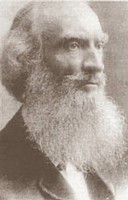 Wilson took up the Chair of English and History at University College, one of the federated colleges of the University of Toronto, in 1854. He is usually described as the first professional scholar in Canadian archaeology and ethnography, and his examinations on “ethnology” in 1855 appear to mark the first courses on this subject in the English-speaking world. In 1853, upon his appointment to Toronto, he wrote in his diary,
Wilson took up the Chair of English and History at University College, one of the federated colleges of the University of Toronto, in 1854. He is usually described as the first professional scholar in Canadian archaeology and ethnography, and his examinations on “ethnology” in 1855 appear to mark the first courses on this subject in the English-speaking world. In 1853, upon his appointment to Toronto, he wrote in his diary,
“Tomorrow I dine with Dr. McCaul, a clever lively Irishman. I suspect I shall have a battle to fight about my chair. He wants to make it a chair of ancient history…. But I have not the slightest intention of being dictated to by anyone as to how I shall teach. “
His ethnological lectures rejected racist theories for cultural developments and emphasized culture contact instead as a force in culture change. Before coming to Canada he was an authority on the prehistory of Scotland and is credited of introducing the term “prehistory” to the English language in his book, The Archaeology and Prehistoric Annals of Scotland (1851). He later published on the archaeology of the New World as well, including Iroquoian archaeology, especially in the Canadian Journal, published by the Canadian Institute. He even carried out early archaeometric work in analysing native copper implements from the Brockville area and bronze axes from Europe. He also served as President of both University College and University of Toronto.
Today a residence building of University College is the main tribute to Wilson’s contributions to the university and the discipline of Anthropology. The Sir Daniel Wilson Award in Anthropology supports both undergraduate and graduate students in anthropology on the basis of need and merit. The University of Toronto Art Centre houses the Daniel Wilson exhibition.
Read more about him in E. Hulse (1999), Thinking with Both Hands: Sir Daniel Wilson in the Old World and the New, University of Toronto Press; G. Killan (1998), Toward a scientific archaeology: Daniel Wilson, David Boyle and the Canadian Institute 1852-96, in Bringing Back the Past: Historical Perspectives on Canadian Archaeology , edited by P.J. Smith, and D. Mitchell, pp. 16-24. Canadian Museum of Civilization and Archaeological Survey of Canada, Mercury Series No. 158; and in M. Levin, G. Avrith, and W. Barrett (1984), An Historical Sketch: Sir Daniel Wilson, 1816-1892 , Department of Anthropology, University of Toronto.
After Daniel Wilson’s death, the historian George Wrong (1860-1948) included lectures in ethnology in his history lectures until his retirement in 1927, but there was relatively little teaching of anthropology at University of Toronto from 1905 to 1919. Wrong, a founder of the Champlain Society, had been head of the History department since 1892.
David Boyle (1842–1911)
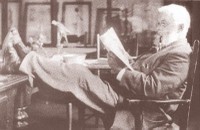 In 1888, the Canadian Institute appointed David Boyle as Canada’s first full-time professional archaeologist. From 1896 to 1911 he served as curator at the Ontario Provincial Museum, a forerunner of the Royal Ontario Museum that grew out of Ryerson’s Museum of Natural History and Fine Arts in 1867. Today Boyle is remembered through The Boyle Memorial Lectureship in Archaeology, which finances lectures by archaeological visitors to the department of Anthropology.
In 1888, the Canadian Institute appointed David Boyle as Canada’s first full-time professional archaeologist. From 1896 to 1911 he served as curator at the Ontario Provincial Museum, a forerunner of the Royal Ontario Museum that grew out of Ryerson’s Museum of Natural History and Fine Arts in 1867. Today Boyle is remembered through The Boyle Memorial Lectureship in Archaeology, which finances lectures by archaeological visitors to the department of Anthropology.
Read more about him in G. Killan (1983), From Artisan to Archaeologist: David Boyle . University of Toronto Press; and (1998), David Boyle, Dictionary of Canadian Biography . Vol. 14, 1911-1920. University of Toronto Press, pp. 130-134.
Davidson Black (1884–1934)
 The discoverer of “Peking Man,” Black was born in Toronto in 1884 and completed a degree in medical science at University of Toronto in 1906. In 1919 he accepted an invitation to work at the Peking Union Medical College in China, and began his search for human ancestors. He began excavations at Zhoukoudian. near Beijing, in 1927 after hearing of the discovery of some teeth there. Over the next two years, the excavations uncovered another tooth and a lower jaw with three teeth, and Black claimed he had discovered a new species, which he named Sinanthropus pekinensis. It was later reassigned to Homo erectus. In 1929, the excavations uncovered the first “Peking Man” skull, and a second one was found in 1929.
The discoverer of “Peking Man,” Black was born in Toronto in 1884 and completed a degree in medical science at University of Toronto in 1906. In 1919 he accepted an invitation to work at the Peking Union Medical College in China, and began his search for human ancestors. He began excavations at Zhoukoudian. near Beijing, in 1927 after hearing of the discovery of some teeth there. Over the next two years, the excavations uncovered another tooth and a lower jaw with three teeth, and Black claimed he had discovered a new species, which he named Sinanthropus pekinensis. It was later reassigned to Homo erectus. In 1929, the excavations uncovered the first “Peking Man” skull, and a second one was found in 1929.
In 1932 he was elected a Fellow of the Royal Society, and in 1934, at the age of 49, he died while working late into the night, probably from a congenital heart defect. You can read more about him in Dora Hood (1978), Davidson Black: a Biography, University of Toronto Press.
Charles Trick Currelly (1876–1957)
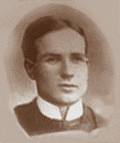 Born in Exeter, Ontario, C. T. Currelly was educated at Victoria College, receiving his B.A.in 1898 and M.A. in 1902. He then set out to do archaeological fieldwork in Egypt, particularly at Tell al-Maskhuta, and later in Crete and Asia Minor. These expeditions were mainly for the purpose of collecting artifacts, however, and these formed the core of a small museum he established at Victoria College, which became the Royal Ontario Museum of Archaeology in 1907, with Currelly its first curator. At first it remained at Victoria College, but the Ontario Legislature’s passage of the ROM Act on 16 April 1912, made it a provincial museum, and Currelly and Sir Byron Edmund Walker, a banker, raised funds for the existing building at the corner of Bloor and Avenue Road. The new museum opened its doors on 19 March 1914, following dedication by HRH the Duke of Connaught. From 1914 until 1946, when he retired, Currelly served as ROM’s director. The ROM was part of the University of Toronto for many decades, and housed the Department of Anthropology in its early years. Even today many of its curators are cross-appointed as university faculty. Currelly’s autobiography, I Brought the Ages Home appeared in 1956, shortly before his death in Baltimore, Maryland.
Born in Exeter, Ontario, C. T. Currelly was educated at Victoria College, receiving his B.A.in 1898 and M.A. in 1902. He then set out to do archaeological fieldwork in Egypt, particularly at Tell al-Maskhuta, and later in Crete and Asia Minor. These expeditions were mainly for the purpose of collecting artifacts, however, and these formed the core of a small museum he established at Victoria College, which became the Royal Ontario Museum of Archaeology in 1907, with Currelly its first curator. At first it remained at Victoria College, but the Ontario Legislature’s passage of the ROM Act on 16 April 1912, made it a provincial museum, and Currelly and Sir Byron Edmund Walker, a banker, raised funds for the existing building at the corner of Bloor and Avenue Road. The new museum opened its doors on 19 March 1914, following dedication by HRH the Duke of Connaught. From 1914 until 1946, when he retired, Currelly served as ROM’s director. The ROM was part of the University of Toronto for many decades, and housed the Department of Anthropology in its early years. Even today many of its curators are cross-appointed as university faculty. Currelly’s autobiography, I Brought the Ages Home appeared in 1956, shortly before his death in Baltimore, Maryland.
There is a story that ROM guards have reported seeing the ghostly figure of a gentleman in a nightshirt, resembling C.T. Currelly, wandering among the museum displays at night.
Sir Bertram C. A. Windle (1858–1929)
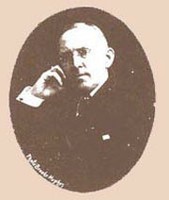 In 1919, Sir Bertram C. A. Windle was appointed Professor of Anthropology in the Philosophy department of St. Michael’s College and Special Lecturer in Ethnology of University of Toronto. He was born in Staffordshire in 1858, and was Dean of Medicine at Queen’s College, Birmingham, then President and Professor of Anatomy at University College Cork, before coming to Toronto. As a pathologist. and in keeping with the unified, Boasian type of anthropology current at the time, Windle taught on archaeological and ethnological, and not only biological, aspects of anthropology. He lectured on such topics as “Features of the Prehistoric Period in the British Isles,” “Ethnology and Early Art of Europe,” and “Manners and Customs of the Peoples of the World,” and published on such topics as “Megalithic remains immediately surrounding Lough Gur, County Limerick.” He died in 1929, but is remembered through a St. Michael’s College graduate scholarship.
In 1919, Sir Bertram C. A. Windle was appointed Professor of Anthropology in the Philosophy department of St. Michael’s College and Special Lecturer in Ethnology of University of Toronto. He was born in Staffordshire in 1858, and was Dean of Medicine at Queen’s College, Birmingham, then President and Professor of Anatomy at University College Cork, before coming to Toronto. As a pathologist. and in keeping with the unified, Boasian type of anthropology current at the time, Windle taught on archaeological and ethnological, and not only biological, aspects of anthropology. He lectured on such topics as “Features of the Prehistoric Period in the British Isles,” “Ethnology and Early Art of Europe,” and “Manners and Customs of the Peoples of the World,” and published on such topics as “Megalithic remains immediately surrounding Lough Gur, County Limerick.” He died in 1929, but is remembered through a St. Michael’s College graduate scholarship.
John Charles Boileau Grant (1886–1973)
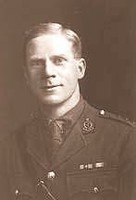 The author of Grant’s Atlas of Anatomy (1943), Grant used to train thousands of medical students around the world. He came to University of Toronto’s Faculty of Medicine from University of Manitoba (and previously Edinburgh), and was Chair of the Department of Anatomy there from 1930 to 1965. Although he is best known for this famous atlas, his research and teaching also included biological anthropology, as evidenced by such work as Anthropometry of the Cree and Saulteaux Indians in Northeastern Manitoba (Archaeological Survey of Canada 1929). The human skeletal collection he formed, the “J.C.B. Grant Collection,” is still a core collection for human osteology in the Department of Anthropology at University of Toronto. He is also remembered in the Grant’s Museum at the Medical Sciences Building at the University of Toronto. This museum, with its displays of anatomical specimens, many of which were dissected by Grant himself, continues to be used in an active learning environment by more than 1000 students each year.
The author of Grant’s Atlas of Anatomy (1943), Grant used to train thousands of medical students around the world. He came to University of Toronto’s Faculty of Medicine from University of Manitoba (and previously Edinburgh), and was Chair of the Department of Anatomy there from 1930 to 1965. Although he is best known for this famous atlas, his research and teaching also included biological anthropology, as evidenced by such work as Anthropometry of the Cree and Saulteaux Indians in Northeastern Manitoba (Archaeological Survey of Canada 1929). The human skeletal collection he formed, the “J.C.B. Grant Collection,” is still a core collection for human osteology in the Department of Anthropology at University of Toronto. He is also remembered in the Grant’s Museum at the Medical Sciences Building at the University of Toronto. This museum, with its displays of anatomical specimens, many of which were dissected by Grant himself, continues to be used in an active learning environment by more than 1000 students each year.
Foundation of the Department of Anthropology
Thomas McIlwraith (1899–1964)
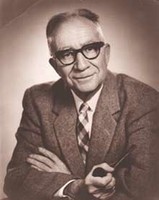 The University of Toronto appointed Thomas McIlwraith (1899-1964) as Lecturer in Anthropology in 1925, and this became the pivotal point in the formation of a department devoted to anthropology in Toronto.
The University of Toronto appointed Thomas McIlwraith (1899-1964) as Lecturer in Anthropology in 1925, and this became the pivotal point in the formation of a department devoted to anthropology in Toronto.
In the 1930s, under McIlwraith’s leadership, anthropology at Toronto, for the first time, grew to have more than a single professor. In 1932 came the addition of Charles “Steve” W.M. Hart, whose ethnographic research on the Tiwi of northern Australia began a Toronto research tradition on that continent that continues today.
In 1936 came establishment of a separate Department of Anthropology, the first academic department of Anthropology at any Canadian university, with McIlwraith as its first Chair. The appointment of Phileo Nash, which followed in 1937, was the first explicit appointment in prehistoric archaeology at a Canadian university. Nash left in 1941 and went on to a distinguished career as an anthropologist and commissioner of the Bureau of Indian Affairs in the United States.
Also in 1941, John F. Embree and Reo F. Fortune joined the department. Embree was conducting ethnographic research in Japan and among Japanese in Hawaii. Later he moved to Yale University, and was tragically killed by a drunk driver in 1950. Fortune, who was married to Margaret Mead from 1928 to 1935, is well known for his ethnographies of the Dobu and Manus islanders of the Pacfic. What many anthropologists do not realize is that he is also known to mathematicians for his conjecture on prime numbers , or “Fortunate Numbers”! Levin et al. (1984), report a story that Fortune once attempted to conclude an academic dispute with McIlwraith by challenging him to a duel with any weapon of his choice from the collections of the ROM. A more likely alternative to this story is that Fortune had actually challenged McIlwraith to a contest of identifying artifacts in the ROM, both men having had museum backgrounds. It is possible that this particular dispute arose over sexual content in some of Fortune’s ethnographic lectures to predominantly female wartime classes.
For more about McIlwraith’s career, see John Barker’s 1987 article, “T.F. McIlwraith and anthropology at the University of Toronto, 1925-1963,” Canadian Review of Sociology and Anthropology 24(2):252-268, and his 1991 entry, “McIlwraith, T. F.”, in C. Winters (ed.), International Dictionary of Anthropologists, Garland Publications, New York. For more on Reo Fortune, see Michael W. Young (1980), “Reo FORTUNE (1903-1979)”, Canberra Anthropology 3:105-108.
Formal training in local archaeology began when Norman Emerson (1917-1978), whom Nash had introduced to archaeology, was hired in 1946. Emerson was responsible for excavating many of the department’s collections. Professor Emerson taught at University of Toronto from 1940 to 1977. He also developed archaeological laboratories at the University and founded the Ontario Archaeological Society in 1951. His career and influence on the next generation of archaeologists are documented in an article by William C. Noble (1998), “J. Norman Emerson: Contributions to Canadian Archaeology,” In Bringing Back the Past: Historical Perspectives on Canadian Archaeology, edited by Pamela Jane Smith and Donald Mitchell, Canadian Museum of Civilization. Also see the exhibit about his work with OAS, Partners in the Past .
The years 1944 to 1948 brought Ray Birdwhistell, G. Gordon Brown, and Edmund S. Carpenter to the department. Carpenter, an extremely popular lecturer, was a collaborator of Marshall McLuhan , with whom he co-edited Explorations in Communication. Carpenter’s work focused on social symbolism in ancient & non-Western art as well as modern mass media, and his publications, such as a book on the Canadian Arctic, sometimes involved collaboration with famous artists, including Frederick Varley. Brown had been working in the Iringa province of what is now Tanzania. Birdwhistell was a former ballet dancer who became a pioneer in the study of non-verbal communication or “body language.” This became known as kinesics . He estimated that “no more than 30 to 35 percent of the social meaning of a conversation or an interaction is carried by the words.” For more information about him, see R. McDermott (1980), “Profile: Ray L. Birdwhistell,” The Kinesis Report 2, 3: 1-16.
Isaac Schapera (1905–2003)
 In the 1950s, M. C. Pirie, I. Schapera, D. Woodward, R. E. Popham, D. W. Samuels, William J. Mayer-Oakes, W. J. Morris, J. W. Van Stone, F. W. Voget, and C. D. Ellis joined the department.
In the 1950s, M. C. Pirie, I. Schapera, D. Woodward, R. E. Popham, D. W. Samuels, William J. Mayer-Oakes, W. J. Morris, J. W. Van Stone, F. W. Voget, and C. D. Ellis joined the department.
Isaac Schapera had served as Malinowski’s research assistant while completing his doctoral studies at London School of Economics in the 1920s, and had already been a professor at University of Capetown from 1935 to 1950 and then at LSE. His research in Botswana focussed on the Tswana, and drew strongly on historical sources such as missionary records, Robert Moffat’s journals and unpublished work by David Livingstone. Today the University of Botswana’s Schapera Project continues this work.
After serving with the US Air Force, Mayer-Oakes did archaeological fieldwork with the Smithsonian Institution in Oklahoma and directed University of Chicago excavations in Illinois and the Carnegie Museum’s Upper Ohio Valley Survey while he finished his MA in Social Work (1949) and Ph.D. in Anthropology (1954). In 1956 he joined the University of Toronto and began fieldwork on the prairies before returning to the US in 1959. After working at the University of Oklahoma, he became the first Chair of the Department of Anthropology and Sociology at University of Manitoba in 1962. He went on to be well known for his work on archaeological survey, CRM, and projectile points in the United States and South America. He is now an emeritus professor at Texas Tech University, Lubbock.
During this decade a number of former Toronto undergraduates who had received graduate training elsewhere also returned to become Anthropology faculty. These included R. W. Dunning, R. C. Dailey and Ron Cohen. In 1956, under the supervision of Prof. T.F. McIlwraith, ![]() Morton Teicher (PDF) became the first person to obtain a Ph.D. in Anthropology at the University of Toronto. His thesis was titled Windigo psychosis: a study of a relationship between belief and behaviour among the Indians of Northeastern Canada.
Morton Teicher (PDF) became the first person to obtain a Ph.D. in Anthropology at the University of Toronto. His thesis was titled Windigo psychosis: a study of a relationship between belief and behaviour among the Indians of Northeastern Canada.
Jim Anderson with Walter Kenyon (photo courtesy Bill Renison)
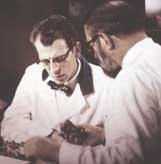 The early 1960s saw the addition of P. E. L. Smith, a Near Eastern prehistorian who later moved to McGill, T. B. Hinton, E. S. Rogers, James E. Anderson , M. K. Moss, A. Podolinsky, and R. Bruce Drewitt.
The early 1960s saw the addition of P. E. L. Smith, a Near Eastern prehistorian who later moved to McGill, T. B. Hinton, E. S. Rogers, James E. Anderson , M. K. Moss, A. Podolinsky, and R. Bruce Drewitt.
Lawrence Oschinsky (1921–1965)
Lawrence Oschinsky, a physical anthropologist, also joined the department in 1963, but unfortunately died only a couple of years later. He was best known for his work on The Racial Affinities of the Baganda and Other Bantu Tribes of British East Africa (Cambridge 1954) and The Most Ancient Eskimos : The Eskimo Affinities of Dorset Culture Skeletal Remains (Ottawa, 1964). Others hired in 1963-64 included E. Todd, C. Frantz, T. H. Charlton, and B. J. Rigsby.
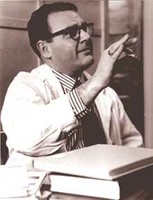 In 1961 the Sidney Smith Building was built, and, after many years at the ROM, the Department of Anthropology was relocated to Sidney Smith Hall (100 St. George Street). In August, 2007, the department moved again to its current location at the Anthropology Building, 19 Russell Street (now 19 Ursula Franklin Street).
In 1961 the Sidney Smith Building was built, and, after many years at the ROM, the Department of Anthropology was relocated to Sidney Smith Hall (100 St. George Street). In August, 2007, the department moved again to its current location at the Anthropology Building, 19 Russell Street (now 19 Ursula Franklin Street).
Tom McFeat (1920–1970)
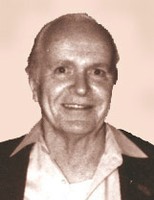 In 1964, a major change occurred when Tom McFeat, formerly of the National Museum of Man in Ottawa, was hired to replace the late Professor McIlwraith as department Chair and continued in that capacity until 1970. He oversaw tumultuous changes in the department and the hiring of a large number of new faculty, including Peter Carstens, Jack Chew, Suichi Nagata, Stuart Philpott, David Hughes, Bill Hurley, Bruce Schroeder, Bob Shirley, Wolfgang Weissleder, Hank Rogers, Bill Irving, Bill Samarin, Jerry Melbye , Frances Burton, Becky Sigmon, Jamshed Mavalwala, Michael Levin, and Ajit Ray.
In 1964, a major change occurred when Tom McFeat, formerly of the National Museum of Man in Ottawa, was hired to replace the late Professor McIlwraith as department Chair and continued in that capacity until 1970. He oversaw tumultuous changes in the department and the hiring of a large number of new faculty, including Peter Carstens, Jack Chew, Suichi Nagata, Stuart Philpott, David Hughes, Bill Hurley, Bruce Schroeder, Bob Shirley, Wolfgang Weissleder, Hank Rogers, Bill Irving, Bill Samarin, Jerry Melbye , Frances Burton, Becky Sigmon, Jamshed Mavalwala, Michael Levin, and Ajit Ray.
Subsequent Department Chairs (1970–present)
Subsequent departmental Chairs have been David Hughes (1970–1973), Bruce Drewitt (1973–1978), Maxine Kleindienst (1978–1986), Suichi Nagata (1986–1991), Gary Crawford (1991–1996), Hy Van Luong (1996–2006), Janice Boddy (2006–2013; 2018–2021), Edward Banning (2013–2018), Holly Wardlow (2021-2023) and Jesook Song (2023-present).
For more on the history of the Department of Anthropology, see M. Levin, G. Avrith, and W.Barrett (1984), An Historical Sketch: Sir Daniel Wilson 1816–1892, Department of Anthropology, University of Toronto; and John Barker (1987), “T.F. McIlwraith and anthropology at the University of Toronto, 1925–1963,” Canadian Review of Sociology and Anthropology 24(2):252-268.
Departmental Exhibit on the Department’s historical links with the Ontario Archaeological Society
Proceedings of a Symposium on the History of Human Osteology at University of Toronto


